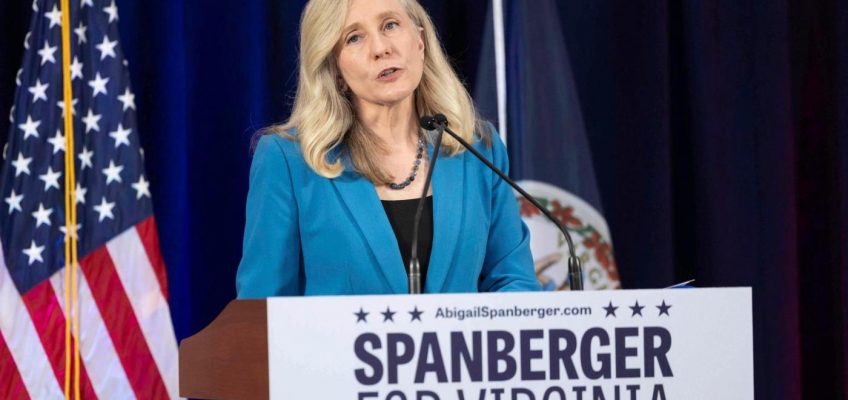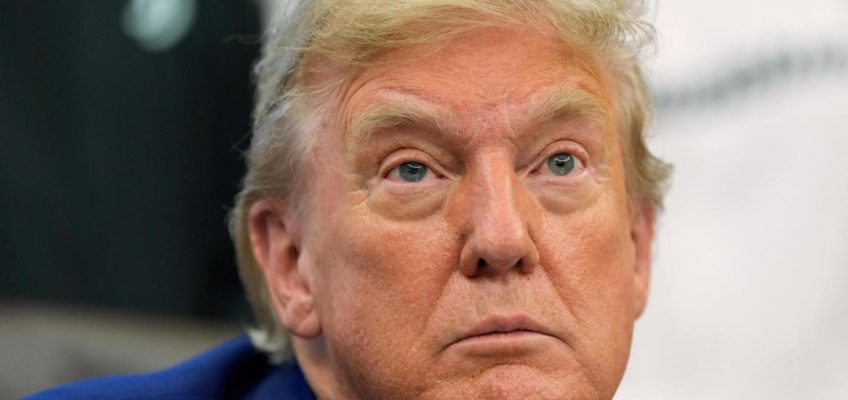By BILL BARROW, OLIVIA DIAZ and MIKE CATALINI
HENRICO COUNTY, Va. (AP) — Abigail Spanberger opened her general election bid for Virginia governor Wednesday using her high school alma mater near Richmond.
“I grew up walking the halls of Tucker High School,” the former congresswoman says as she walks past a bank of lockers in her first ad since securing the Democratic nomination. Later, she notes her experience as a CIA case officer, then in the halls of Congress as a tough-minded, get-things-done lawmaker.
The same kind of message is echoing in New Jersey from Rep. Mikie Sherrill, as she also makes a bid for governor. Both women are selling themselves as Democrats who can rise above the rancor of Donald Trump’s Washington.
For national Democrats who have spent months debating how to counter the president’s aggressive second administration, it’s a reminder of what worked for the party during Trump’s first term. Spanberger and Sherrill were headliners in the 2018 roster of center-left Democrats who helped flip House control from Republicans with balanced appeals to moderates, progressives and even anti-Trump conservatives. Now, they’re leading statewide tickets in races that could offer Democrats a back-to-the-future path forward as they look toward next year’s midterms.
“There are a lot of similarities” in Democrats’ current position and the 2018 campaigns, said Sen. Ben Ray Luján, D-N.M., who, as a House member, chaired his party’s congressional campaign arm during Trump’s first midterm election cycle.
Rep. Mikie Sherrill, D-N.J., greets people during a “Get Out the Vote” rally, Saturday, June 7, 2025, in Elizabeth, N.J. (AP Photo/Heather Khalifa)
The 2018 Democratic freshman class yielded a net gain of 40 seats with a lineup that featured record numbers of women and plenty of candidates with national security and business backgrounds. A similar effort yielded a net gain of six governors.
The party’s 2018 winners also included outspoken progressives like Reps. Alexandria Ocasio-Cortez of New York and Ilhan Omar of Minnesota, elected in more liberal, urban districts. But the balance of power shifted on the backs of centrist candidates who carried the nation’s suburbs and improved Democrats’ performance in exurbs and even small-town, GOP-dominated areas.
Among Spanberger’s and Sherrill’s freshman colleagues were Elissa Slotkin of Michigan, another former CIA analyst, who won a suburban Detroit seat before her elevation to the Senate last November; Rep. Jason Crow, a former Army officer, who represents suburban Denver; and Rep. Angie Craig, who flipped a GOP-held seat in greater Minneapolis and now is running for Senate. Crow is now co-chairman of candidate recruitment for the Democratic Congressional Campaign Committee.
Similar resumes are popping up among new Democratic recruits. In Michigan, for example, Bridget Brink, former U.S. ambassador to Ukraine, announced her bid for Slotkin’s old 7th Congressional District on Wednesday by leaning into her international experience as a counter to Trump.
Luján said the common thread has been recruiting “real people, regular folks” with “incredible credentials” and an ability to hold “a real conversation with people around economic issues … around the kitchen table” and campaign in any area.
So even as New Jersey’s Sherrill calls her Republican rival Jack Ciattarelli a “Trump lackey” and Spanberger pledges in a fundraising email to “defeat Trump’s agenda at the ballot box,” their wider appeal depends on different arguments.
Sherrill has from the start touted her biography: a Naval Academy graduate, Navy Sea King helicopter pilot, federal prosecutor and mother of four. Her blue and gold yard signs have a chopper hovering above her name. She is also promising an “Affordability Agenda” to address voters’ economic concerns.
Spanberger, part of the Problem Solvers Caucus when she was on Capitol Hill, leans into her deal-making centrism, promises to confront economic gaps and has pledged to campaign in every Virginia congressional district, including where Trump has dominated.
“It’s not the job of the governor of Virginia to cater to President Trump,” Spanberger said in one of her final primary campaign speeches. “It’s not the job of the governor of Virginia to cater to a political party.”
Related Articles
Trump’s latest judicial pick is someone Joe Biden almost nominated
ICE raids and their uncertainty scare off workers and baffle businesses
Justice Department challenges Kentucky regulation allowing in-state tuition for undocumented students
Trump remakes the White House with new flagpoles
ICE takes custody of Spanish-language journalist arrested at Georgia protest
In an Associated Press interview earlier this spring, Spanberger even criticized former President Joe Biden for “posturing” by promising to eliminate student debt — something he could not accomplish by presidential action alone. “Don’t make promises you can’t keep,” she said.
She also bristled when asked to describe her place on the political spectrum. She instead said she set goals by asking, “How do I impact the most people in the fastest way possible?”
Jared Leopold, a Democratic strategist who worked as a senior staffer for the Democratic Governors Association during the 2018 cycle, said it’s notable that Spanberger and Sherrill avoid getting mired in the internal party tussle among progressives, liberals and moderates.
“Most voters aren’t really thinking about things along a simple left-right political spectrum,” especially in statewide races, Leopold said. “People are looking for politicians who they think understand them and can get things done to help them.”
He pointed to another 2018 Democratic standout: Michigan Gov. Gretchen Whitmer. Now a potential 2028 presidential candidate, Whitmer first gained national attention as a state legislator who spoke out about abortion rights and her experience of being raped as a college student. But she became a juggernaut in the governor’s race with what Leopold called a “brilliant and simple” slogan: “Fix the damn roads!”
Of course, Democrats do not dispute that a candidate’s military and national security experiences help neutralize routine Republican attacks of all Democrats as too liberal or out of touch.
“These credentials for how they’ve served the country — they’re just sharing who they are,” Luján said.
Said Leopold: “It certainly gives a different definition of what the Democratic Party is to some voters.”
In Virginia, Republican nominee and Lt. Gov. Winsome Earle-Sears, who like Spanberger would become the first woman to serve in the state’s top elected office, is trying to tie the Democratic nominee to her national party.
Earle-Sears’ social media accounts frequently share pictures of Spanberger and Biden hugging and wearing masks. She accuses Spanberger of effectively rubber-stamping Biden’s legislative agenda while in Congress.
“Part of the challenge,” Spanberger retorts, “is that either my opponent or people who might be running anywhere, who don’t necessarily have things to run on, are going to try and distract.”
Spanberger, Sherrill and Democrats like them hope that most voters assess the GOP attacks and their own branding efforts like Fred Martucci, a retired glazier who voted early in Trenton, New Jersey.
The 75-year-old expressed a visceral distaste for Trump. As for what impresses him about Sherrill, he said: “She was a Navy helicopter pilot. You can’t be a dummy — she’s sharp.”
Olivia Diaz is a corps member for The Associated Press/Report for America Statehouse News Initiative. Report for America is a nonprofit national service program that places journalists in local newsrooms to report on undercovered issues.
Barrow reported from Atlanta, Catalini from Trenton, New Jersey.




